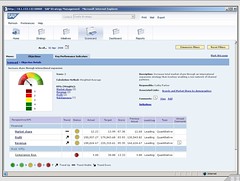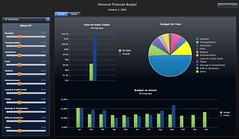Jonathan Becher hosted a wrap-up Q&A with Doug Merritt, Marge Breya and Sanjay Poonen. I’ve consolidated the responses rather than attributing them to the individuals:
- On reasons for Business Objects’ continued growth: major contributors include having the SAP sales force also selling Business Objects products, and expansion of the product suite to include GRC and EPM. Also, synergy of two leaders in different markets coming together to create something bigger than the sum of the parts.
- On portfolio roadmap for products being sunsetted or merged (a.k.a. the stuff that I wasn’t allowed to blog about earlier): it’s probably accurate to summarize that some of the SAP BI products will be discontinued but the customers will be migrated to appropriate Business Objects products, and there will be a few products that are merged.
- On the growth of on-demand BI, expect to see some of the Business Objects applications (as opposed to just the platforms) offered using a SaaS model, although there’s nothing definite being discussed here.
- On the link between BI and business rules, which hasn’t really been mentioned explicitly today: operational BI is part of their portfolio, and they’re working on ways to integrate more closely with BPM, BAM and decisioning.
- On open source: they’re not seeing stress from open source products so are working on making their current successful OEM strategy work for them rather than considering releasing open source products.
After the panel, Becher did a summary about closing the gap between strategy and execution, and the trends that are driving innovation in business intelligence:
- Unified information, moving from structured information generated within the four walls of the organization, to structured and unstructured and internal and external information
- Collaborative decisions, moving from individual contributors within functional silos, to teams collaborating and communicating across boundaries
- Business network optimization, from point relationships with customers and suppliers, to a dynamic network of partners
Business Objects’ goal: to transform the way the world works by connecting people, information and businesses. A bit ambitious, but they believe that bringing together BI, EPM and GRC is truly transformational.
That’s it for the Business Objects Influencer Summit; I’m staying on here tomorrow for the SAP SME day and will continue blogging then.



